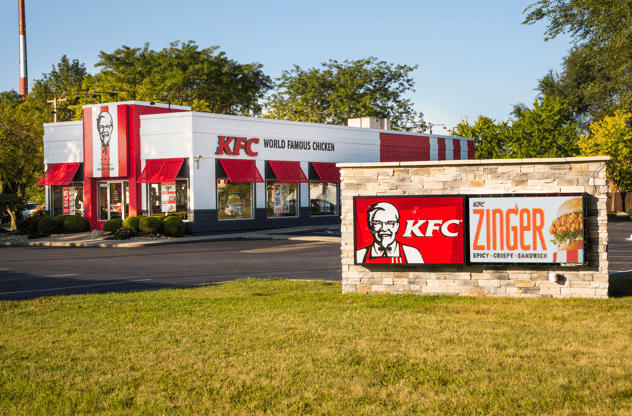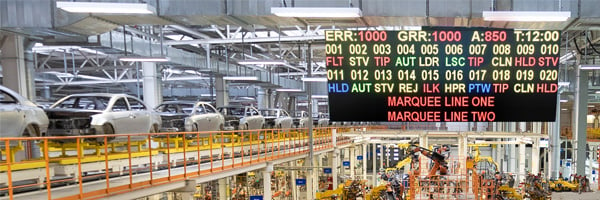
Choosing the right LED display size is crucial for ensuring that your display meets your specific needs and provides an optimal viewing experience. To make the correct decision for your business, there are several factors to consider.
Visibility and Viewing Distance of LED Display
Choosing the proper LED display size depends on your application. It’s critical to make sure your display is legible from far distances. When signs are placed high or set far away from a high traffic areas, a larger LED display is necessary. When an application is closer to the road and set at eye-level, you can get away with a smaller display.

Viewing Angle
Consider the angle at which viewers will be looking at the display. Audiences spread out over a wide area may need a larger screen to provide clear visibility from various angles.
Space Constraints of LED Display Location
The physical space where you plan to install the LED display is another critical factor to consider. Ensure that the chosen display size fits comfortably within the available space without obstructing other elements or compromising the aesthetics of the environment. Measure the dimensions of the installation area, including height and width, to determine the maximum screen size that can be accommodated.
-
Aspect ratio: Consider the aspect ratio (e.g., 16:9 or 4:3) of the LED display in relation to the available wall or mounting space. Choose a size that matches the aspect ratio of your content to prevent distortion or black bars.
-
Be aware of any obstructions: Check for potential obstructions such as pillars, beams, or other structures that could block the view of the display. Adjust the size and placement of the screen accordingly to ensure unobstructed viewing angles.
Content and Utilization of LED Display
The type of content you plan to display and the intended purpose of the LED display should inform your choice of screen size. You also have to consider how you want to utilize your display. Is it for advertising, informational content, entertainment, or presentations? Perhaps you need an LED display to relay information or for mass communication? Different purposes may require different screen sizes for optimal impact and engagement.

Content Resolution
The type of content you intend to display can influence the screen size. For detailed content like spreadsheets or fine graphics, a larger screen may be necessary to ensure legibility, even from a distance. Ensure that the LED display size aligns with the resolution of your content. Higher resolution content may require a larger screen to display details effectively.
Monochrome or Single Color Displays
When using a monochrome or signal-color unit, you will most likely only be displaying text to your potential customers or employees. If this is the case, you will want to make sure your display is larger in size to allow the appropriate amount of lines of text to send messages to your customers.
Full-Color LED Displays
If a full color-display is an option, you will want to make sure your display is antiquating to your application. Full-color displays give you more of an eye-grabbing and memorable message. You will want to make sure your display is big enough to send full color graphics, animations, and potential videos. With full color displays, the bigger the better if it fits in your budget.


